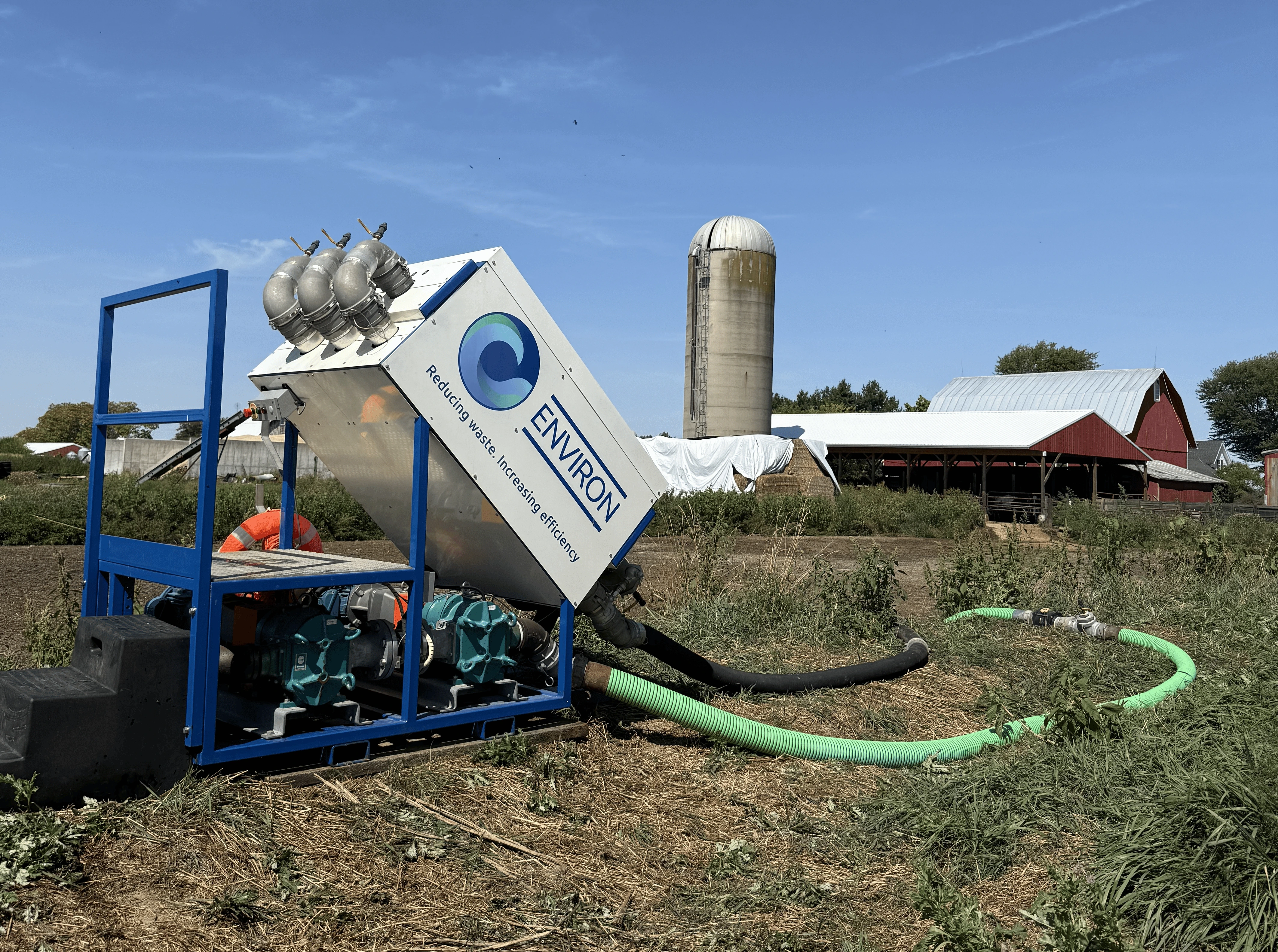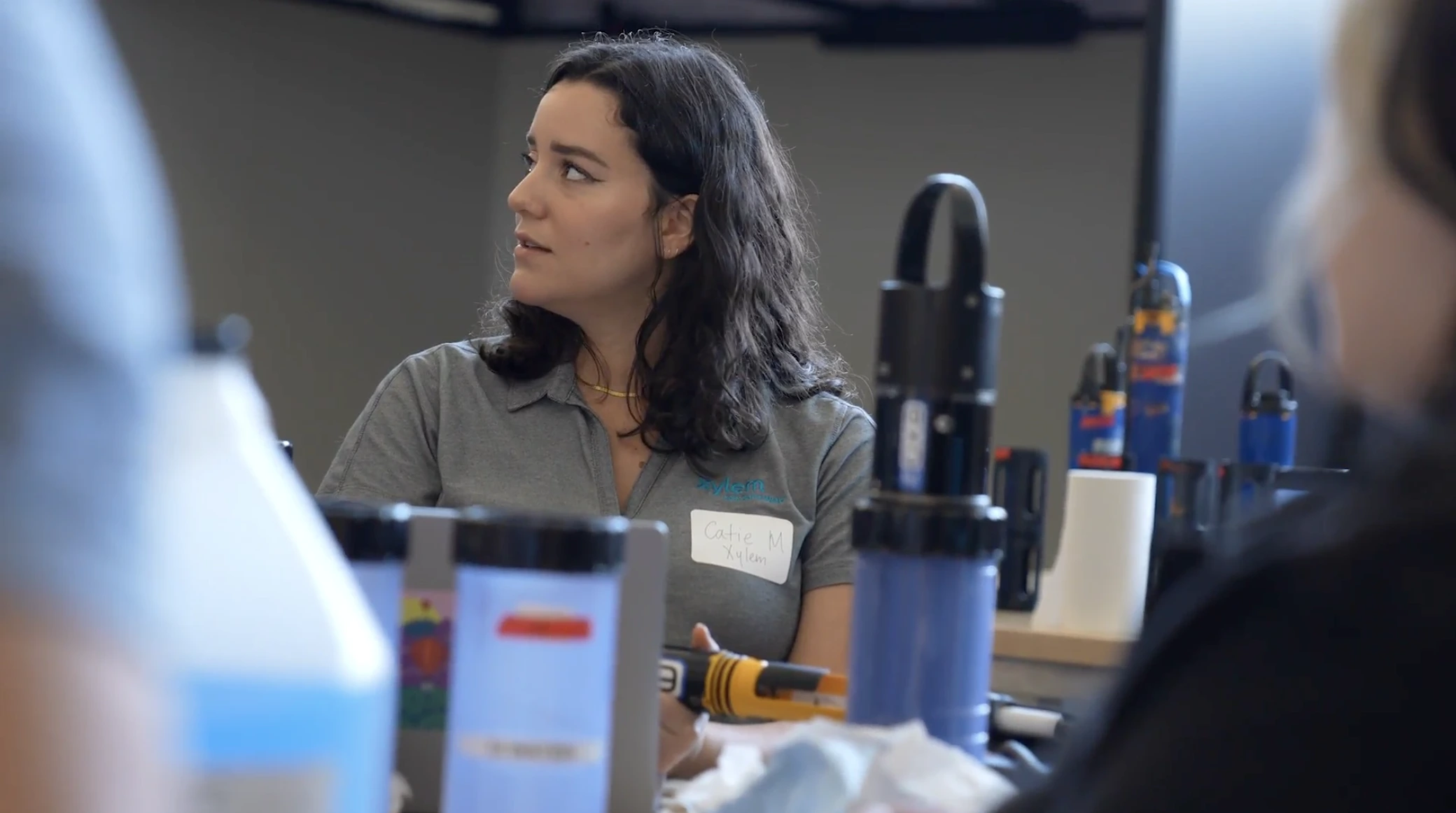Cleveland Water Alliance (CWA) is leading a new technology demonstration using Ohio-based company Neundorfer's technology on three farms in Northwest Ohio aimed at preventing nutrient runoff from entering waterways. This project, funded by the US EPA and Ohio EPA's H2Ohio program, is connecting two essential industries critical to Ohio’s economic prosperity: agriculture and water.
Listen to this article
OTTAWA, OH — Cleveland Water Alliance (CWA) is leading a new technology demonstration aimed at preventing agricultural nutrient runoff from entering our waterways. Three farmers in Northwest Ohio have tested the locally-developed technology. This effort is funded by a Great Lakes Restoration Initiative grant through US EPA’s Great Lakes National Program Office and Ohio EPA’s Division of Surface Water.
The Problem: A Complex Challenge for Water and Agriculture
When farmers apply fertilizers and animal manure to their fields, heavy rains or excess application can cause nutrients like nitrogen and phosphorus to wash off into our rivers, streams, and lakes, leading to water quality issues like harmful algae blooms. In 2020, the H2Ohio Technology Assessment Program released a request for technologies to address this issue. Now, after multiple rounds of evaluation, funded by H2Ohio, field testing of several of the most promising solutions is underway.
Real-World Testing to Accelerate Solutions
CWA coordinates technology demonstrations as part of their testbed network, connecting industries that manage, monitor, or use water with cutting-edge technology. These unique testing opportunities offer a key understanding of how the equipment operates in real-world environments, evaluating its effectiveness and ease of use. This process allows startups, research groups, and global corporations to gain valuable feedback and make adjustments when commercializing their product or entering a new market. CWA also connects them with regional business support services like local manufacturers, legal assistance, and office space to foster business growth and regional economic development.
"This is a prime example of connecting the dots across Ohio's water economy," said Max Herzog, CWA's Deputy Director of Programs and Partnerships. "We are leveraging our world-class testbed network to support an innovative Ohio company, address a critical environmental issue, and provide economic benefits for farmers—all while accelerating the commercialization of cutting-edge technology right here in our region."
How the Technology Works
The technology, licensed by Willoughby-based industrial engineering company Neundorfer, uses an electrical charge to rupture the cells in manure, allowing phosphorus, the primary nutrient which drives harmful algal blooms, to separate and settle out. The company, celebrating their 50th anniversary in business this year, typically specializes in air quality and pollution control solutions, but saw an opportunity to explore a new market.
"As a Northeast Ohio company, we're all very passionate about water," said Steve Ostanek, President of Neundorfer, Inc. "This technology represents an expansion of our capabilities and builds on our internal expertise. We're excited about being exposed to this need for new solutions, and the prospect of helping Ohioans as well as other communities across the Great Lakes region."
A Collaborative Effort
Heidelberg University's National Center for Water Quality Research, regional experts in nutrient runoff, has been enlisted to help assess the effectiveness of the technology, and three farmers will be providing feedback on the practical application, ease of use, and impact on their operations.
"Farmers have always been at the forefront of conservation," said David Emerman, Chief Community Officer at the Ohio Environmental Protection Agency and a co-chair of the H2Ohio Technology Assessment Program. "Their livelihoods depend on their crops and their soils. The goals of environmental protection and farmers are aligned: to keep nutrients on the field and available to the crops. The technologies demonstrated in this project help farmers feel comfortable applying them to their own fields, having seen the data and the benefits firsthand."
Next Steps for Innovation
The field tests with farmers have just concluded, with Heidelberg University researchers reviewing performance data to evaluate the technology’s effectiveness. If the technology is proven effective, CWA will convene workshops with farmers, agencies, and researchers to explore a path to commercialization. CWA is also currently trialing technology in their Smart Lake Erie Watershed testbed, which focuses on water quality and condition monitoring. This is CWA’s first farm technology demonstration, connecting two essential industries critical to Ohio’s economic prosperity: agriculture and water.
About Cleveland Water Alliance
Cleveland Water Alliance is building a thriving Great Lakes water economy by advancing global technology solutions right here in our region. CWA helps water management and monitoring technologies overcome barriers to market by offering access to real-world testbed opportunities, industry expertise, and a clear path to commercialization.

.webp)


.svg)



.webp)


